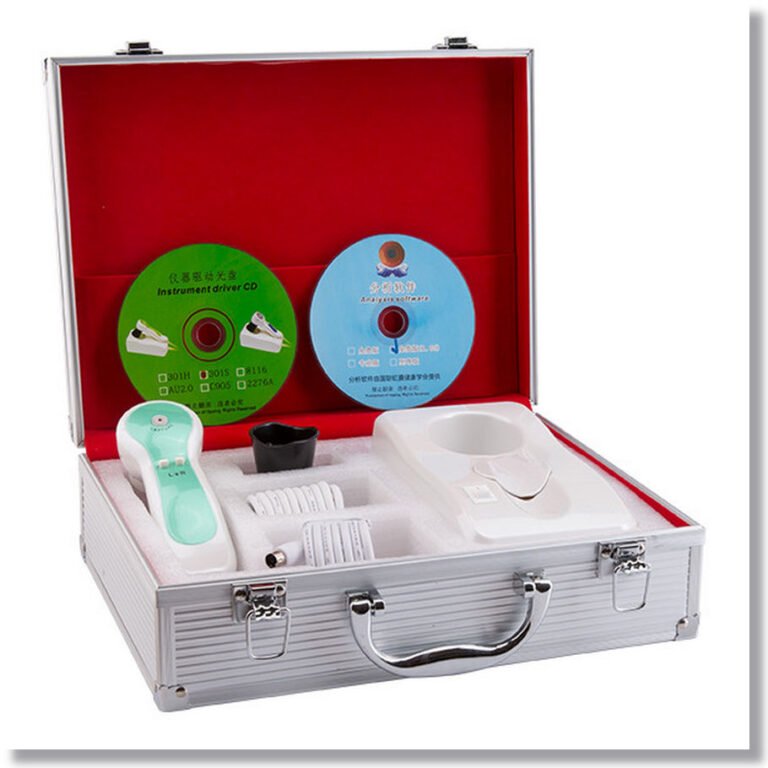Natural Therapy which Studies the Iris to Reflect Human Health and Susceptibility to Disease. Color Eye Charts, Map, History
O estudo da Iridologia afirma que através do estudo das marcas na íris pode-se aprender sobre o funcionamento interno do corpo.
A palavra “íris” é grego e significa “arco-íris” ou “halo.” A íris é a parte colorida do olho que circunda a pupila.
Acredita-se que cada fibra, cor, padrão e defeito na íris tenha uma correlação reflexa com uma manifestação de doença ou mau funcionamento de um sistema orgânico. Ao estudar o olho, os iridologistas podem revelar o estado geral de saúde do paciente, bem como suas tendências a doenças hereditárias e possíveis problemas futuros.
Acredita-se que o olho esquerdo corresponda ao lado esquerdo do corpo e o olho direito ao lado direito do corpo. Em geral, os órgãos superiores (cérebro, tireóide) estão na parte superior da íris e os órgãos inferiores (rins) estão na parte inferior.
A iridologia é usada mais como uma ferramenta de diagnóstico do que como tratamento. Não é um exame médico ou um diagnóstico definitivo de doença. Em vez disso, propõe reconhecer:
* Toxinas e suas localizações
* Estágios da Inflamação
* Fraqueza ou Força Inerente
* Nível geral de saúde
* Deficiências Bioquímicas

Na leitura da íris para obter uma visão do corpo, várias características são estudadas. Estes incluem, mas não estão limitados a camadas, cores, anéis e manchas.
Layers
Uma teoria primária da Iridologia é que a íris é construída em camadas que representam os quatro estágios da atividade do tecido.
*Alterações agudas
*Alterações subagudas
* Mudanças crônicas
*Alterações degenerativas
COLORS
Existem 3 tipos principais de olhos físicos:
● Tipo de Olhos Azuis (Linfático): Apresenta risco aumentado de problemas no trato respiratório superior, trato digestivo, trato urogenital, tecidos linfáticos, articulações, rins e desequilíbrios nas glândulas supra-renais.
● Tipo de Olho Misto (Biliar): Este tipo apresenta descolorações (geralmente marrom-claras) sobre um fundo azul. Eles correm maior risco de problemas relacionados ao fígado, problemas do trato digestivo e alergias.
● Tipo de Olhos Castanhos (Hematogênico): Este tipo está predisposto a distúrbios sanguíneos e desequilíbrios de minerais, especialmente cálcio. Este tipo deve prestar atenção ao sistema circulatório, fígado, baço, medula óssea, sistema digestivo e glândulas endócrinas.
As cores em certas áreas da íris correspondem à área do corpo indicada pelos mapas. Você pode então decidir que tipos de alterações estão ocorrendo.
* Branco indica uma área do corpo trabalhando duro para “manter.”
* Amarelo-branco indica uma área do corpo que está perdendo uma batalha.
* Amarelo indica função renal deficiente; esclera amarela (parte branca do olho) sugere doença da vesícula biliar.
* Laranja indica problemas no metabolismo de carboidratos e fraqueza no fígado e/ou pâncreas. Os níveis de glicose devem ser verificados.
*Marrom avermelhado indica deterioração.
* Marrom indica função hepática deficiente e “sangue sujo.”
* Preto indica tecido moribundo.
RINGS
Existem numerosos anéis vistos na íris. Aqui estão alguns dos principais.
* A borda ou anel de propósito de Scurf é uma faixa escura ao redor da íris, indicando que a pele não está funcionando corretamente. Essas pessoas não suam facilmente (falta de desintoxicação), aumentaram a produção mucosa e o estresse renal. Eles são “pele grossa” emocionalmente.
* Anéis de estresse ou anéis de liberdade parecem anéis de crescimento em uma árvore. Eles indicam tensão e tensão neuro-muscular. Essas pessoas tendem a ser perfeccionistas e são altamente ativas e orientadas a realização.
* O anel lipídico ou anel de determinação é um anel branco pesado, cobrindo parcial ou completamente a borda externa da íris. Este anel é encontrado principalmente em pessoas mais velhas e é indicativo de arteriosclerose e outros problemas cardiovasculares. Também pode indicar problemas com o fígado e a tireóide e um risco aumentado de doença de Parkinson. Essas pessoas tendem a ser teimosas.
* Rosário linfático ou anel de harmonia parece um pequeno anel de nuvens ao redor da íris externa. Essas pessoas têm congestão linfática e linfonodos inchados. Talvez a pessoa com este anel não esteja fazendo exercícios suficientes para as partes do corpo em particular subjacentes ao anel. Essas pessoas internalizam outras’ Problemas para fazer tudo parecer harmonioso, pois não gostam de conflitos e tensão em seu ambiente.































